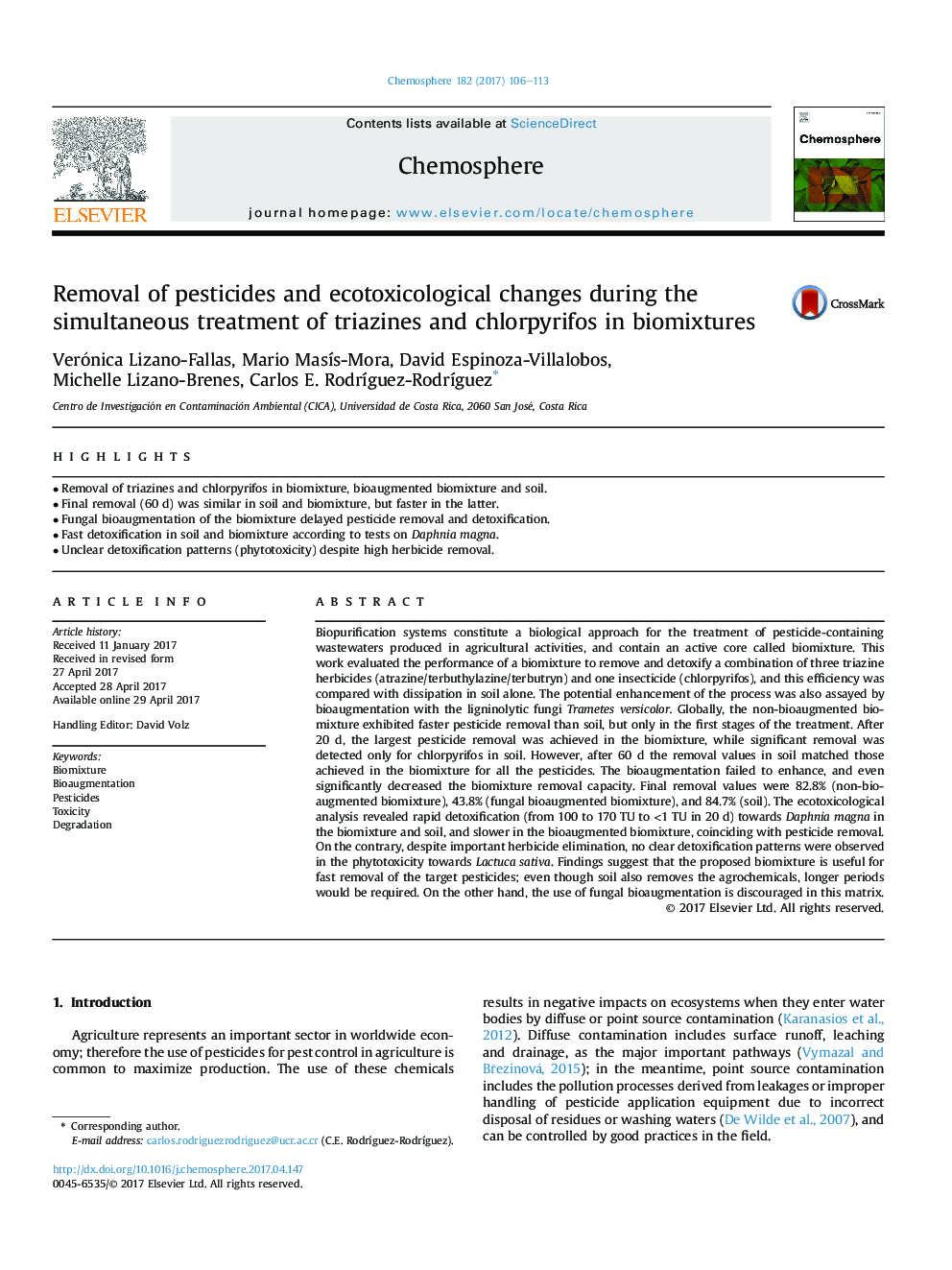| کد مقاله | کد نشریه | سال انتشار | مقاله انگلیسی | نسخه تمام متن |
|---|---|---|---|---|
| 5746904 | 1618789 | 2017 | 8 صفحه PDF | دانلود رایگان |
- Removal of triazines and chlorpyrifos in biomixture, bioaugmented biomixture and soil.
- Final removal (60Â d) was similar in soil and biomixture, but faster in the latter.
- Fungal bioaugmentation of the biomixture delayed pesticide removal and detoxification.
- Fast detoxification in soil and biomixture according to tests on Daphnia magna.
- Unclear detoxification patterns (phytotoxicity) despite high herbicide removal.
Biopurification systems constitute a biological approach for the treatment of pesticide-containing wastewaters produced in agricultural activities, and contain an active core called biomixture. This work evaluated the performance of a biomixture to remove and detoxify a combination of three triazine herbicides (atrazine/terbuthylazine/terbutryn) and one insecticide (chlorpyrifos), and this efficiency was compared with dissipation in soil alone. The potential enhancement of the process was also assayed by bioaugmentation with the ligninolytic fungi Trametes versicolor. Globally, the non-bioaugmented biomixture exhibited faster pesticide removal than soil, but only in the first stages of the treatment. After 20Â d, the largest pesticide removal was achieved in the biomixture, while significant removal was detected only for chlorpyrifos in soil. However, after 60Â d the removal values in soil matched those achieved in the biomixture for all the pesticides. The bioaugmentation failed to enhance, and even significantly decreased the biomixture removal capacity. Final removal values were 82.8% (non-bioaugmented biomixture), 43.8% (fungal bioaugmented biomixture), and 84.7% (soil). The ecotoxicological analysis revealed rapid detoxification (from 100 to 170 TU to <1 TU in 20Â d) towards Daphnia magna in the biomixture and soil, and slower in the bioaugmented biomixture, coinciding with pesticide removal. On the contrary, despite important herbicide elimination, no clear detoxification patterns were observed in the phytotoxicity towards Lactuca sativa. Findings suggest that the proposed biomixture is useful for fast removal of the target pesticides; even though soil also removes the agrochemicals, longer periods would be required. On the other hand, the use of fungal bioaugmentation is discouraged in this matrix.
Journal: Chemosphere - Volume 182, September 2017, Pages 106-113
